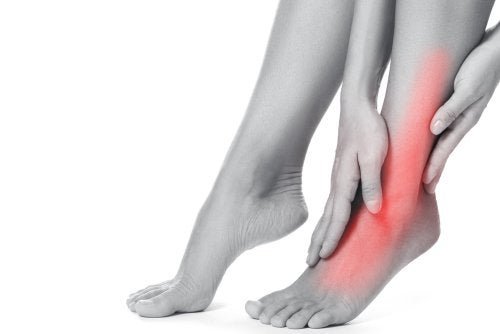What is an ankle dislocation like?

Ankle dislocation is a rare injury. It is usually caused by a violent accident or previous diseases that weaken the bones.
 Ankle dislocation is a rare injury. When it does, it is generally due to a very severe accident, almost always in traffic or during the practice of a sport. It basically means that some of the bones in this joint have been displaced.
Ankle dislocation is a rare injury. When it does, it is generally due to a very severe accident, almost always in traffic or during the practice of a sport. It basically means that some of the bones in this joint have been displaced.
In a dislocation there is a permanent separation of the two parts that make up a joint. It occurs when excessive force is applied to the ligament that joins two bones.
In this way there is a separation at the ends of such bones, which are the parts that are connected. In the case of ankle dislocation, there is separation between the tibia and the talus.
In general, ankle dislocation causes much more pain than the fracture itself. It is so strong that it is not unusual for the patient to lose consciousness. Therefore, it is a condition that requires urgent medical and hospital care.
Table of Contents
Types of ankle dislocation
There are several ways to classify ankle dislocation. They can be categorized according to the cause that produces them, according to the way in which the injury is configured and according to the time of evolution.
Let’s look at each of these classifications.
Dislocations according to cause
Depending on the cause, an ankle dislocation is divided into:
- For direct and indirect trauma. It is the case in which an ankle dislocation is caused by a severe sports or traffic accident.
- By muscular traction. When it is the result of a violent, abrupt or inappropriate movement.
- Recurrent. If there is a previous unhealed dislocation and the ligament tear persists, new dislocations are common.
- Spontaneous. When there is bone or joint weakness, due to previous diseases such as osteoporosis or other similar ones.
- Congenital. Those that occur during the fetal stage or from birth.
Dislocations according to shape.
Depending on the way the ankle dislocation is configured, it is divided into:
- Complete. When there is total loss of articular cartilage and the components of the joint are totally separated.
- Open. If, in addition to the ankle dislocation, there is also a skin wound.
- Closed. When there are no breaks in the skin.
Dislocations according to the time of evolution
According to the time of evolution, they are simply classified into:
- acute: the immediate moment of having occurred.
- recent: when they have less than 3 weeks of evolution.
- old: in the other cases.
Symptoms and diagnosis
The main clinical manifestation is pain. This one is extremely intense. There is a feeling of tearing, which is perceived as deep and tiring.
It is usual for the pain to begin to diminish little by little, but it is severely activated when trying to move the ankle. This produces a very strong spasm that can lead to loss of consciousness.
The patient is therefore unable to move the joint. This looks deformed and inflamed and it is usual that there is visible redness in the affected area.
It is also common for the person to experience a sensation of burning heat in the area.
The doctor will begin by exploring the injured area. He will then do a gentle palpation to determine which are the points of greatest pain and to determine if there is displacement of fragments.
In addition, you will try to move the foot in different directions to get a preview of the nature of the dislocation. Most often, he will order X-rays and, if necessary, a CT scan.
Complications and prevention
Ankle dislocation, like any other injury, can also lead to various complications.
The most frequent are the tearing of the muscles, tendons and ligaments that support the joint. Likewise, there may be nerve damage in adjacent blood vessels.
In some cases, joint stiffness occurs. It is also possible that arthritis develops over the years and that the person is susceptible to new dislocations in the same ankle, or even fractures.
The main preventive measures to avoid an ankle dislocation are the following:
- Warm up before doing any sports activity.
- Perform frequent exercises, with the aim of increasing the resistance of the ligaments and increasing the flexibility of the joints.
- Do physical activity that strengthens the ankles.
- Wear protective gear when carrying out activities that expose the ankles to injury.
- Wear comfortable and suitable footwear for each activity.
- Prevent falls, avoiding stepping on slippery or unstable floors.